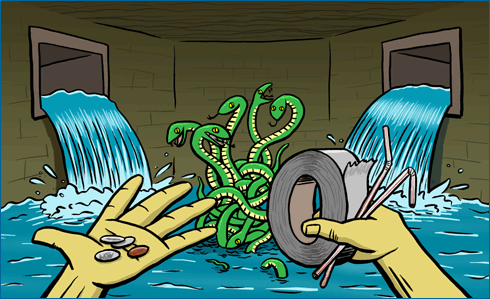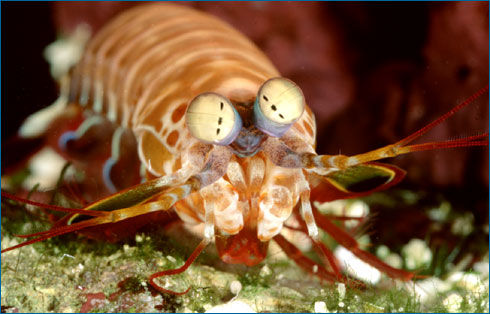by the Understanding Evolution team
Imagine yourself facing some little, unexpected problem — being trapped, along with several hundred deadly vipers, in a rapidly flooding room, with the walls closing in. The ideal solution (being rescued by a SWAT team equipped with anti-venom and scuba gear) might not be available to you. Likewise, it’s too late to have avoided the situation in the first place — you weren’t anticipating this particular problem when you decided to explore the ancient, rumored-to-be-cursed temple. You are constrained — the only tools you have to solve your problem are what you happen to have in your backpack: some loose change, duct tape, and several drinking straws. Perhaps, you can figure out some solution, but it won’t be ideal.

Evolution, too, is constrained, as is the adventurer above who wound up in an unexpected situation. Evolution works with whatever tools are available at the moment — not duct tape and drinking straws, but bodies, behaviors, and genes. This on-the-fly problem solving often leads to solutions that are less than ideal, but “good enough.” Here, you will learn how the traits that a lineage inherits from its ancestors may constrain its future evolution. Specifically, we will see how the exoskeleton has altered the course of evolution for arthropods, and how one group of organisms, the mantis shrimp, have evolved “good enough” solutions within the constraints introduced by the exoskeleton.

- What is evolutionary baggage?
- How can an organism's evolutionary history constrain its future evolution?
- Does a lineage always evolve the best solution to a problem? Why or why not?
